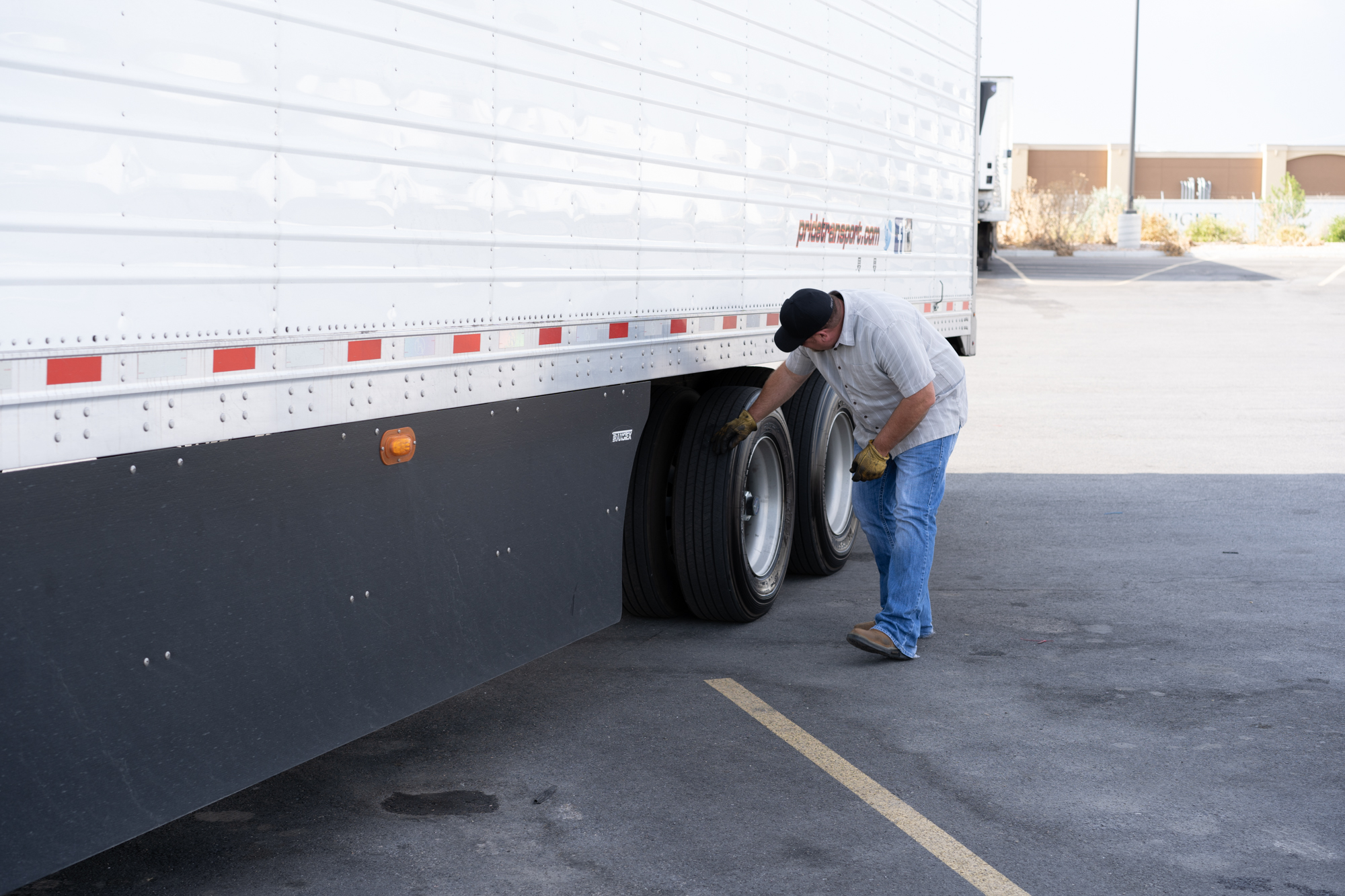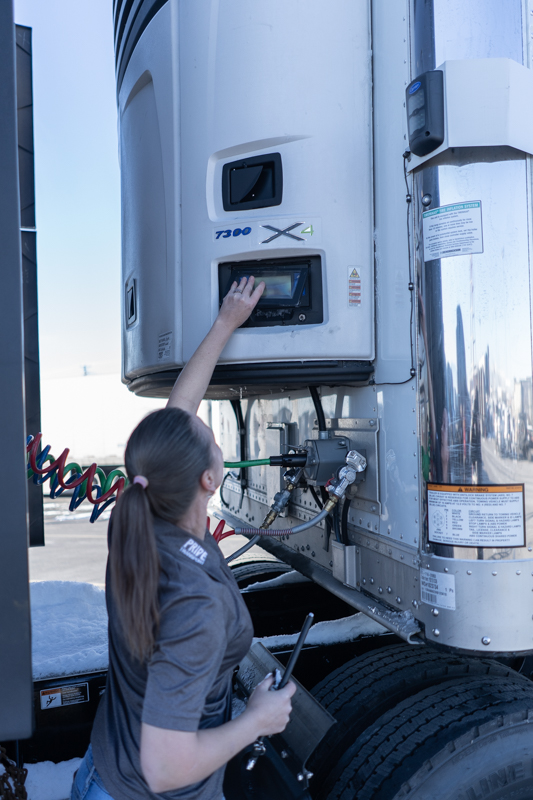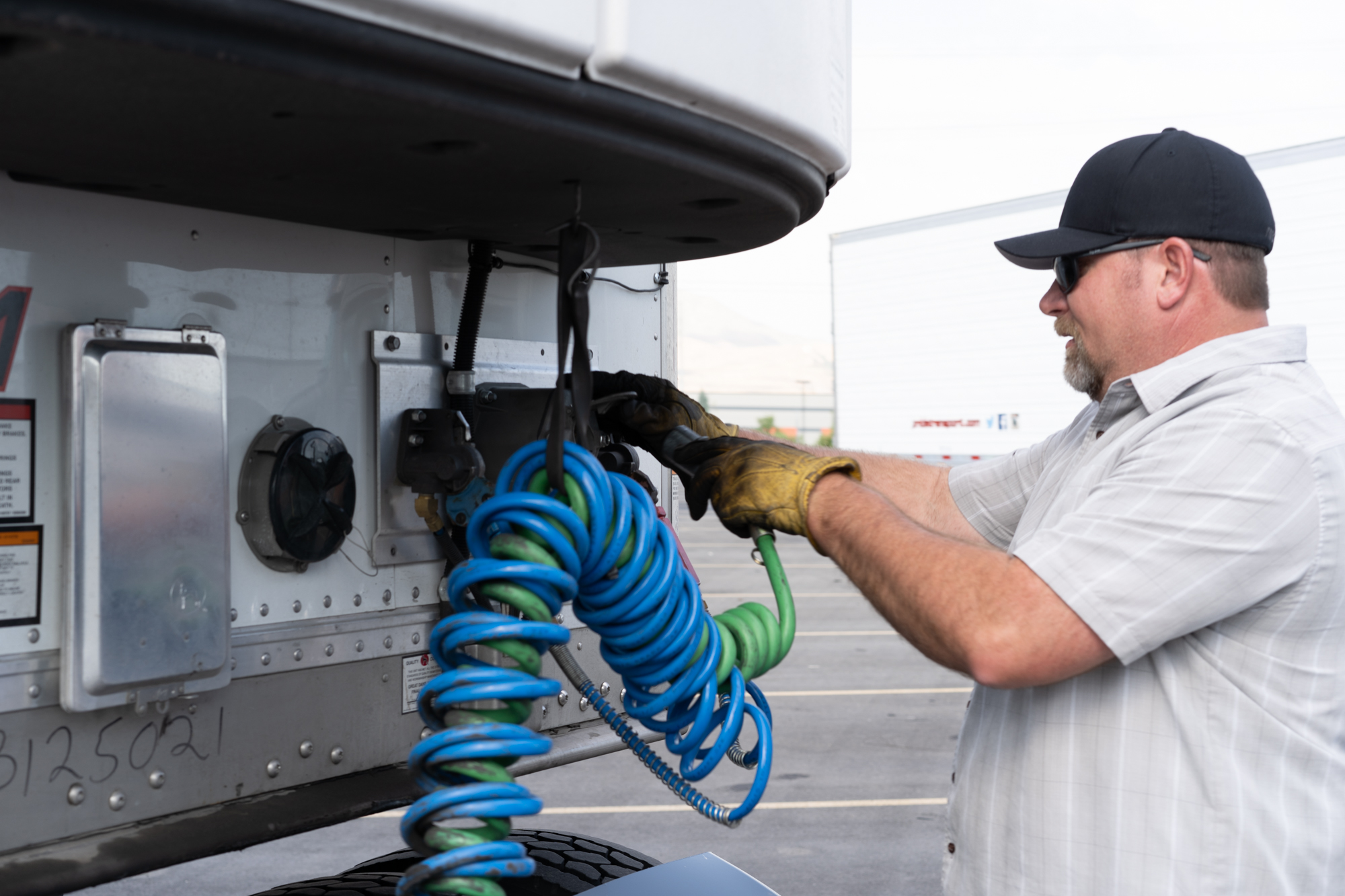by Pride Transport | Nov 10, 2025
If you're gearing up for your CDL exam, there's a good chance the pre-trip inspection has you sweating a little. You're not alone. It's one of the most detailed and technical parts of the test and it can feel like a mountain of information to learn all at once.
Whether you're just starting your trucking journey or you're a seasoned hand getting back in the saddle after some time off, learning the pre-trip isn't just about acing the test. It’s about becoming a professional who knows their rig inside and out. This routine is the foundation of safe driving, and the habits you build now will stick with you for the long haul.
Fortunately, there are practical ways to make the inspection routine stick, with strategies that help you not only memorize the steps but understand the process so well it becomes second nature.
Why the Pre-Trip Inspection Really Matters
Before we dive into techniques, It’s important to understand why this process is worth your time and effort. The pre-trip inspection is your first, and sometimes only, opportunity to catch issues that could cause serious safety risks down the road. Loose components, air leaks, brake problems, tire wear, and more can all turn into costly and dangerous problems if they’re not addressed before you hit the highway.
According to the Federal Motor Carrier Safety Administration, drivers are required by law to perform a pre-trip inspection to ensure their vehicle is safe to operate. Beyond the legal requirement, drivers who consistently perform thorough inspections reduce the chances of mechanical failure, out-of-service violations, and even accidents.
In the 2025 Brake Safety Week, over 15,000 commercial vehicles were inspected, and more than 2,000 of them were taken off the road due to brake-related issues. That’s 15.1% of the total number of vehicles inspected. Many of those violations could’ve been avoided with a solid pre-trip.
You don’t want to be the driver stuck on the shoulder with a preventable issue, or worse, involved in an accident. Learning the inspection the right way gives you peace of mind and sets the tone for the kind of driver you’ll be. This isn’t just test material, it’s an essential part of life on the road.
Break It Down by Zone
Trying to memorize the entire pre-trip inspection from top to bottom can feel overwhelming, especially if you're learning everything at once. One of the best ways to tackle this challenge is to break the process down into manageable sections. Think front to back, top to bottom.
Here’s a solid order to follow:
- Front of the truck
- Engine compartment
- Driver-side door and fuel area
- Under the cab and frame
- Trailer
- In-cab inspection
- Brake system (both in-cab and under-truck)
When you divide it like this, each area becomes its own mini-inspection. You can focus on learning one section at a time, and you’ll start to build a routine that sticks.
The TruckingTruth Pre-Trip Guide is a great resource to see how this flow works visually. Don't be afraid to draw diagrams or label truck schematics during study sessions. This technique also makes it easier to identify any sections you’re struggling with so you can spend more time reviewing them.
Build Muscle Memory Through Repetition
Reading about the steps or watching videos is a good start, but if you want it to stick, you need to physically go through the inspection yourself. Walk around your truck. Point at the parts. Say what you're checking and why.
This three-pronged approach, see it, touch it, speak it, locks the information into your memory faster than passive study ever will. First, by seeing the part, you create a visual link. Second, by touching or pointing to it, you engage physical memory. Third, by saying the proper terminology out loud, you improve recall and build verbal fluency which is crucial for passing the test.
The more you go through the routine, the more naturally it will come. You'll also build confidence, which is key when you're standing in front of an examiner.

Use Mnemonics That Make Sense to You
Mnemonics are memory tricks, and they work. One of the most common ones for pre-trip is PMS: Properly Mounted and Secured. You’ll use this phrase for dozens of components.
But don’t stop there. Create your own acronyms or word games. For example, you could use "ABC" for "Air, Brakes, and Connections" when looking at the glad hands. These little tricks might feel silly at first, but they work, especially when you repeat them daily. The key is making them personal and consistent.
Use Apps and Flashcards for Extra Practice
Technology can be a great tool when you’re trying to master the CDL pre-trip. Several apps are available that simulate the inspection process or let you test yourself on different sections of the truck. CDL Prep and CDL Test Genie, are reliable options for Android and iOS users.
These tools are especially helpful if you don’t have daily access to a truck during training or downtime. You can run through parts of the inspection, test your knowledge, and track which sections you need to spend more time reviewing.
Flashcards can also be useful. Many CDL training programs offer printable sets that include each part of the inspection and the correct phrases to describe them. You can even make your own based on the official CDL manual from your state’s DMV, ensuring you're studying the correct material.
Visualization Techniques
Another great technique, and underrated tool, is mental visualization. Before bed, try sitting quietly, close your eyes, and walk through the entire pre-trip inspection in your head. Picture yourself approaching the truck, opening the hood, pointing to each component, and explaining what you're checking for.
This works because visualization taps into the same parts of your brain as physical practice. Athletes use it, performers use it, and smart drivers should too.
Add verbal cues to make it even stronger. Say each step out loud while you visualize it. This helps build consistency and confidence, especially when you're preparing for your CDL exam.
Know the “Why” Behind Each Step
While memorization is important, the key to long-term retention is understanding. When you know why you're inspecting something, you’re more likely to remember what to look for.
For example, when you check the air brake hoses, you're not just doing it because the manual says so. You're looking for leaks or damage that could lead to complete brake failure.
Inspecting the tires isn't just about noting tread depth, it's about preventing blowouts that could endanger you and others.
Understanding what each part does and what failure looks like gives context to your routine. It’s easier to remember, and a lot more meaningful, when you know the real-world consequences tied to your safety and the performance of your equipment.
It also makes you more adaptable. If you forget a word or phrase during the test but understand the purpose, you can still explain the function clearly and pass.
Practice Under Test Conditions
Once you've built a strong foundation, simulate the CDL test environment. Ask a friend, instructor, or another driver to observe you as you go through the inspection. They can act as the examiner, stopping you if you skip a part or phrase something incorrectly. If you’re solo, use your phone to record your performance. Then compare it to a sample video or checklist to spot mistakes.
This kind of realistic practice reduces anxiety, builds confidence, and prepares you for success on test day. Try doing a few run-throughs in less-than-ideal conditions. Rain, low light, or background noise all mimic real-world scenarios and toughen your mental focus.

Keep the Habit After You Pass
The pre-trip inspection is more than a test requirement, it’s a daily requirement that keeps you and your equipment safe. Passing your CDL test isn’t the finish line, it’s the starting point. Building a consistent inspection routine helps you avoid costly breakdowns, failed roadside inspections, and DOT violations that can impact your record.
By continuing to follow the same pre-trip process every day, you’ll build speed and confidence and you’ll never be the driver who gets sidelined for missing something obvious.
Drivers who cut corners on inspections usually find out the hard way. Don’t be that driver. Take the extra few minutes to do it right.
Why It Matters Year-Round
Annual inspection events are a yearly reminder that inspections matter. Inspectors will be focused specifically on brake drums and rotors, looking for cracks, rust, heat spots, and wear.
If your equipment isn’t inspection-ready, you’re risking not just a fine, but being pulled out of service on the spot.
Also, don't forget that solid inspections aren't just about passing scrutiny. They help protect your CSA score, reduce downtime, and increase your chances of getting priority loads.
You’ve Got This
Remembering your CDL pre-trip inspection takes time and effort, but it’s absolutely doable with the right strategy. By breaking the process into sections, using repetition and memory aids, and practicing regularly, you’ll go from overwhelmed to confident in no time.
And if you're looking for a company that values safe, well-trained drivers, Pride Transport is here for you. We know how hard you’ve worked to earn your CDL, and we’re proud to support drivers who take their training and their safety seriously.
Drive with Pride. Apply Today.
